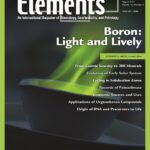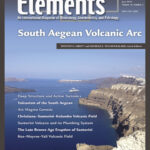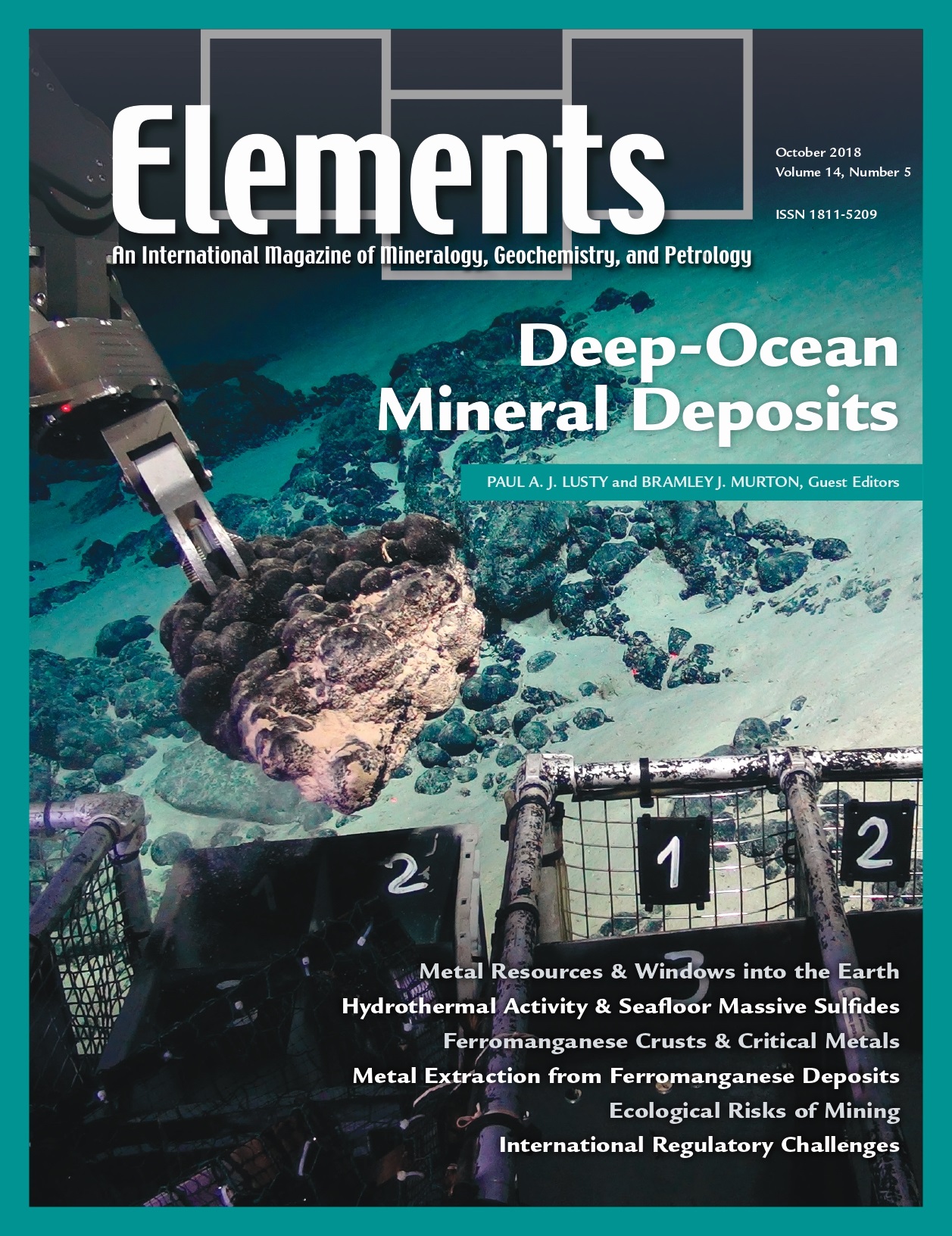
Boron: Light And Lively, August 2017, Vol. 13, No. 4
June 28, 2024
South Aegean Volcanic Arc, June 2019, Vol. 15, No. 3
June 28, 2024Deep-Ocean Mineral Deposits, October 2018, Vol. 14, No. 5
$20.00
Significant deposits of metal-rich minerals are known to exist on the deep-ocean floor, in some instances exceeding global land-based resources. In recent years, advances in understanding and technology coupled with an evolving regulatory regime have resulted in growing interest in mining these deposits.
Deep-Ocean Mineral Deposits
October 2018, Vol. 14, No. 5
Significant deposits of metal-rich minerals are known to exist on the deep-ocean floor, in some instances exceeding global land-based resources. In recent years, advances in understanding and technology coupled with an evolving regulatory regime have resulted in growing interest in mining these deposits. However, assessing the potential and challenges of exploitation is hindered by our relatively poor knowledge of this vast and inaccessible environment. This issue introduces the reader to the deep-ocean mineral deposits that are attracting most interest, describing genetic models for their formation and future research challenges, including the possible role of microbes in concentrating metals. It examines the potential for the low-carbon extraction of metals from these novel deposits, and provide readers with a better understanding of the host of environmental, social, economic, political and legal challenges that need to be addressed for the sustainable development of these resources.
Why You’ll Love Elements Magazine:
- Expert Contributors: Articles written by renowned researchers in the field of geoscience.
- Engaging Content: Join a community of readers who are passionate about Elements.
- Exceptional Quality: Each issue is printed on high-quality paper with stunning visuals and detailed illustrations that bring complex scientific concepts to life.
Order your copy of the October 2018 issue of Elements magazine today and delve into deep-ocean mineral deposits.
Related products
-
Supervolcanoes, February 2008, Vol. 4, No. 1
$20.00Explosive super-eruptions from large volume, shallow magma systems lead to enormous and devastating pyroclastic flows, the formation of gigantic collapse calderas, and deposition of volcanic ash over continent-sized areas. Recognition that future eruptions from these “supervolcanoes” will undoubtedly have severe impacts on society—and perhaps on life itself—has led to recent public and media interest.
-
Water On Mars, June 2006, Vol. 2, No. 3
$20.00During the past several decades, spacecraft data have transformed the planets from astronomical objects into geologic worlds. Mars is the current focus of planetary exploration, and NASA’s objectives for this effort are based on the theme, “follow the water.
-
Phosphates And Global Sustainability, April 2008, Vol. 4, No. 2
$20.00Phosphorus is a unique element: it is essential to the existence of all living forms, and as such controls biological productivity in many terrestrial and marine environments; but when in excess, it leads to uncontrollable biological growth and water-quality problems. This has become a common environmental issue, resulting from our careless use of phosphorus in agriculture, yet phosphate ore deposits, from which fertilizers are produced, are a finite natural resource.




